With the growing craze for cricket, the varying formats, including T20 Cricket, the level of competition has forced every cricketer to perform consistently and constantly at his best which tends to take a toll on their health.
It is often said that “Prevention is better than cure”. Injuries and sports go hand in hand and are a part and parcel of an athlete’s life. So here are a few injury prevention strategies:
Warm-up
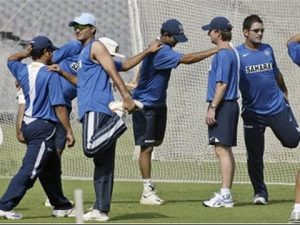
Warm-up prepares the body for exercise. The type of exercise to be performed determines the type of warm-up. The most effective warm-up consists of both general and specific exercises. General exercises may include jogging, general stretching and mobility, and activation exercises. Specific exercises include stretches and movements appropriate for the particular activity about to be undertaken.
The possible benefits of warm up prior to physical activity include:
1. Increased blood flow to muscles
2. Increased oxygen delivery to muscles
3. Decreased number of injuries due to increased range of motion in the joints
4. Decreased stiffness of the tissues leading to decreased likelihood of tears
5. Increased cardiovascular response to sudden strenuous exercise
6. Increased relaxation and concentration.
Taping and Bracing
Taping (or strapping) and bracing are used to restrict undesired, potentially harmful movements and allow desired motion. There are two main indications for the use of tape and braces:
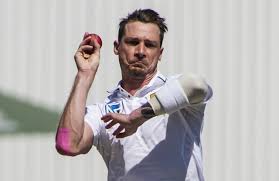
1. Prevention- taping is used as a preventive measure in high-risk activities (e.g. ankle taping in fast bowlers).
2. Rehabilitation- taping is used as a protective mechanism during the healing and rehabilitation phase.
You must have seen the South African pace bowler Dale Steyn taping his elbow while bowling in recent times.
Bracing
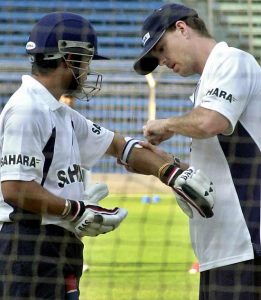
Bracing has several advantages over taping. A sportsperson can put a brace on by himself or herself and, although the initial cost of a brace may be high, a good-quality, strong brace lasts a considerable time and may prove to be
cheaper than repeated taping. Legendary cricketer Sachin Tendulkar regularly used an elbow brace during his tennis elbow injury.
Protective Equipment
Protective equipment has been designed to shield various parts of the body against injury without interfering with sporting activity. Remember Phil Hughes, the Aussie Batsman died during a match when the ball hit the back of his neck!
After that incidence the helmets have been modified and added with an extra protection at the back of the neck.
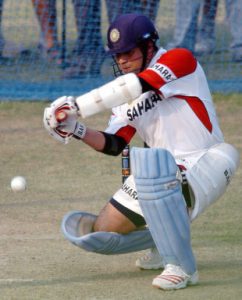
Other protective equipments include pads, elbow guard, gloves, groin guard, thigh and chest guard. Suitable equipment All the equipments used for playing must be suitable and comfortable for the player. Equipments of appropriate size and shape help the player to perform with minimal discomfort.
For Example: Running shoes or spikes
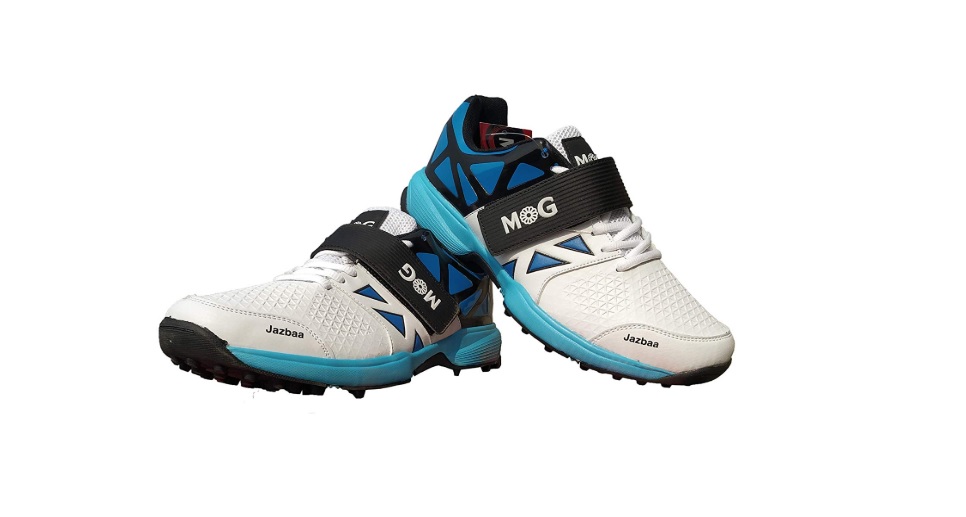
I have often encountered players wearing the same spikes for almost 4-5 years. Their spikes are almost worn out and flat which decreases the grip of the shoe with the ground surface leading to instability during running, causing injuries. The optimum shoe to prevent injuries is one that matches the player’s specific body and foot features.
Appropriate Surfaces
We as cricketers have to play on different grounds comprising of different soils. Some grounds are soft while, some are really hard. Hard surfaces can lead to increased ground reaction force (it is force that the ground exerts on foot after the foot landing) leading to pain in the shin bone. I have seen many players practicing on cement wickets and coming with shin pain. Whereas soft surfaces leads to loose landing of the foot which can cause serious ankle injuries.
A surface which feels easy to grip and run easily is considered to be an appropriate one.
Appropriate Training
Training to gain the optimum fitness is an important component. In an era where fitness has become the most prime factor in the cricketing world, appropriate training can help you achieve it. Be it overtraining or undertraining, both can cause injuries. Hence doing the right kind of training at the right time with good workload management can help you reduce the rate of injury in a better way.
Adequate Recovery
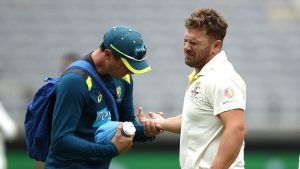
Adequate recovery is essential if the athlete is to benefit fully from training and prevent injuries from occurring. A number of methods are commonly used to fasten the recovery process. These include:
1. Warm-down (active recovery)
2. Cold water immersion (ice baths)
3. Massage
4. Lifestyle factors
5. Nutrition
6. Psychology
It is always better to do Prehabs (prevention rehab) and be injury free rather than sitting out and doing rehab which at times become frustrating as you have to be away from the sport. But do you actually think about it that much? If not, then its time to think about it! Hope this one will help you in prolonging your cricketing career! Cheers to many more years of injury free cricket.



Comments are closed.